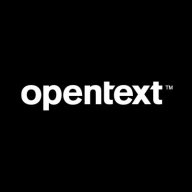

OpenText Core Application Security and Fortify Application Defender are leaders in application security. Fortify Application Defender maintains an edge due to its comprehensive feature set, despite OpenText being favored for pricing and customer support.
Features: OpenText Core Application Security supports quick compliance with HIPAA, offers static and dynamic result correlation, and provides real-time vulnerability tracking. Fortify Application Defender integrates seamlessly into CI/CD pipelines, supports a diverse range of programming languages, and includes expansive scanning capabilities like static code analysis and vulnerability detection.
Room for Improvement: OpenText Core Application Security could benefit from more detailed reporting, better integration with systems like incident management, and more transparency in pricing packages. Fortify Application Defender needs to focus on reducing false positives, improving integration with bug tracking systems, and enhancing reporting capabilities for better usability.
Ease of Deployment and Customer Service: OpenText Core Application Security offers deployment across on-premises, public cloud, and hybrid environments, with praised customer service though some issues arise with false positives. Fortify Application Defender is notable for its easy deployment both on-premises and in the cloud, with generally good customer service but occasional delays in issue resolution.
Pricing and ROI: OpenText Core Application Security is seen as cost-effective with flexible pricing models, aligning with its wide capabilities. Fortify Application Defender, although higher in cost, is considered a worthwhile investment due to its robust features and quality results. Exploring the trial version is recommended for potential users to gauge its value.
| Product | Market Share (%) |
|---|---|
| OpenText Core Application Security | 3.6% |
| Fortify Application Defender | 0.8% |
| Other | 95.6% |


| Company Size | Count |
|---|---|
| Small Business | 3 |
| Midsize Enterprise | 1 |
| Large Enterprise | 8 |
| Company Size | Count |
|---|---|
| Small Business | 16 |
| Midsize Enterprise | 8 |
| Large Enterprise | 43 |
Micro Focus Security Fortify Application Defender is a runtime application self-protection (RASP) solution that helps you manage and mitigate risk from homegrown or third-party applications. It provides centralized visibility into application use and abuse while protecting from software vulnerability exploits and other violations in real time.
OpenText Core Application Security offers robust features like static and dynamic scanning, real-time vulnerability tracking, and seamless integration with development platforms, designed to enhance code security and reduce operational costs.
OpenText Core Application Security is a cloud-based, on-demand service providing accurate and deep scanning capabilities with detailed reporting. Its integrations with development platforms ensure an enhanced security layer in the development lifecycle, benefiting users by lowering operational costs and facilitating efficient remediation. The platform addresses needs for intuitive interfaces, API support, and comprehensive vulnerability assessments, helping improve code security and accelerate time-to-market. Despite its strengths, challenges exist around false positives, report clarity, and language support, alongside confusing pricing and package options. Enhancements are sought in areas like CI/CD pipeline configuration, report visualization, scan times, and integration with third-party tools such as GitLab, container scanning, and software composition analysis.
What features define OpenText Core Application Security?Industries like mobile applications, e-commerce, and banking leverage OpenText Core Application Security for its ability to identify vulnerabilities such as SQL injections. Integrating seamlessly with DevSecOps and security auditing processes, this tool supports developers in writing safer code, ensuring secure application deployment and enhancing software assurance.
We monitor all Application Security Tools reviews to prevent fraudulent reviews and keep review quality high. We do not post reviews by company employees or direct competitors. We validate each review for authenticity via cross-reference with LinkedIn, and personal follow-up with the reviewer when necessary.